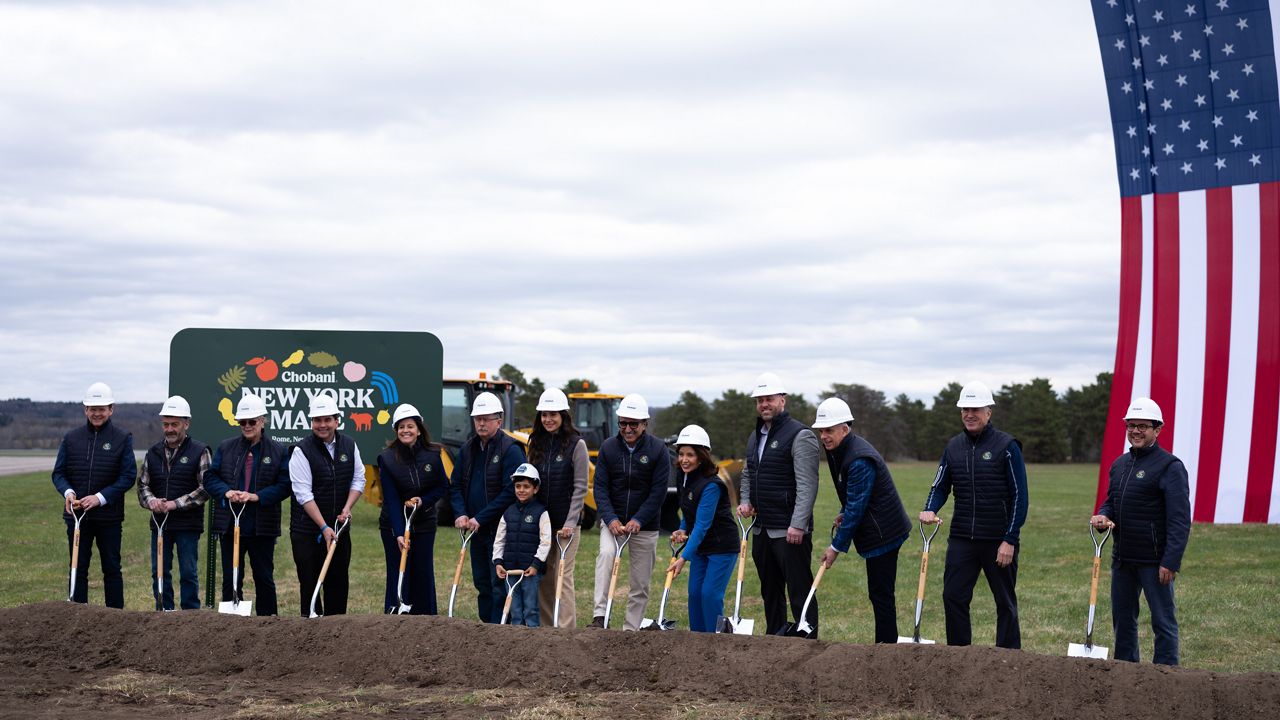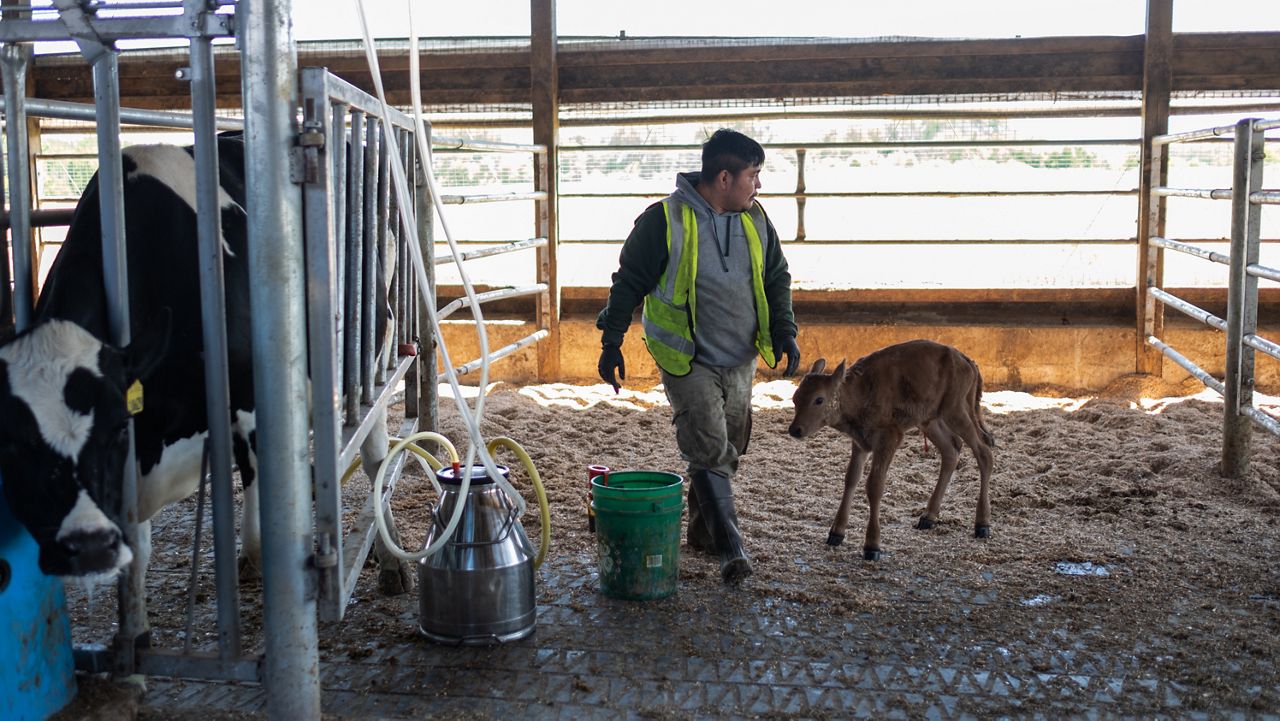Algal blooms have become common and cause unsafe water conditions in New York’s lakes.
Earlier this week, blooms were confirmed in both Owasco and Cayuga lakes, and Skaneateles Lake is no stranger to algal blooms, either.
Researchers have, at least in part, attributed the cause of the bacteria to runoff from fertilizers often used by farmland that sits nearby as part of the lakes’ watersheds.
But some farmers throughout the Finger Lakes are doing their part to protect waterways and prevent hazardous blooms.
Greg Rejman, owner of Sunnyside Farms in Sciopio Center, Cayuga County, farms 7,400 acres and milks about 5,000 cows. His farm is between Owasco Lake and Cayuga Lake, sitting on both watersheds.
“I think it’s roughly about a quarter of our land is in the Owasco Lake watershed, and we actually have a couple of fields on the farm that are in both watersheds,” Rejman said.
The farm has taken up multiple practices to protect the waterways from runoff.
“Reduced tillage over the years and different tillage implements that don’t disturb the soil quite as much. We inject well over 90% of our manure directly into the ground to help prevent runoff,” Rejman said.
Injecting manure directly into the ground rather than putting it on top gives them a more efficient and effective way to maintain the soil. When this is done, the soil immediately binds to the ammonium and nitrogen, which are vital to good soil health and prevent these nutrients from running into waterways.
Cover crops and buffers are other tools utilized Rejman said they have implemented for over 20 years. Most of their steep fields have been made into permanent grass fields.
In total, Rejman said they could put a 35-foot-long buffer all the way around Owasco Lake with only the buffers they have on their farm.
“That puts into perspective how much buffer we have on our farm and there’s even more now,” he said.
Without cover crops and buffers, Sunnyside would experience much more soil erosion, resulting in their land not being as fertile for crops.
“Nutrients are a farmer’s greatest asset. Without them, we’d be out of business,” Rejman said.
Kirsten Workman, a nutrient management and environmental sustainability specialist with ProDairy at Cornell University, said Sunnyside Farms is a great example of a farm that is helping to protect water quality.
In addition to managing runoff from fields, Workman said Sunnyside Farms controls what comes from their barns and other facilities as well.
“They’re managing runoff from barns, where they store feed, manure that results from those cattle and where the animals are housed. And then whatever nutrients they’re collecting on the farm, they’re applying back to the land and doing that in a really prescriptive way,” Workman said.
By doing this, their nutrient management plan ensures that each field gets exactly what it needs — not too much and not too little, Workman said.
Manure begins with what the cattle are eating, so there are some strategies that farms can implement by balancing things brought onto and leaving the farm.
“We look at the whole farm-nutrient balance. So, we look at anything that might be important to the farm and anything that gets exported from the farm, and we do a giant math problem to do some checks and balance and make sure they’re hitting sustainable thresholds,” Workman said.
In New York, farms that have over 300 cows, which is more farms, are required to obtain a concentrated animal feeding operation (CAFO) permit that protects water quality.
“Part of that permit process is going through comprehensive nutrient management planning and in that process, you identify a whole suite of [best management practices] that a farm would need to implement, and they are required to [do that] before they qualify for the permit,” Workman said.
All farms operate differently, which is an important consideration when requiring them to follow certain regulations, Workman said.
“Having the ability for our farms to implement what’s going to work best for their farm and their watershed on their landscape with their scale, equipment and resources has been the power of how we get this work done,” Workman said.





?wid=320&hei=180&$wide-bg$)




